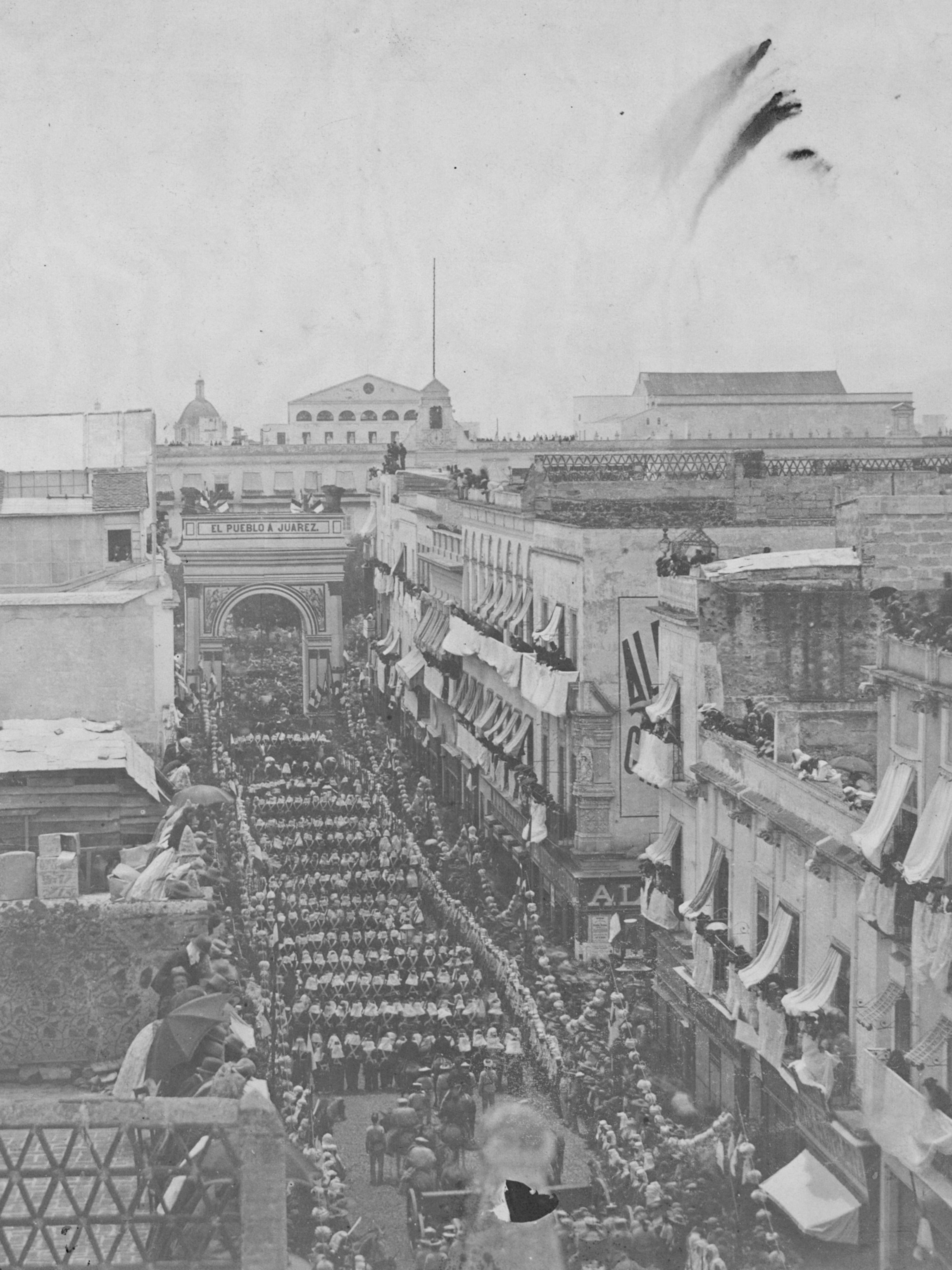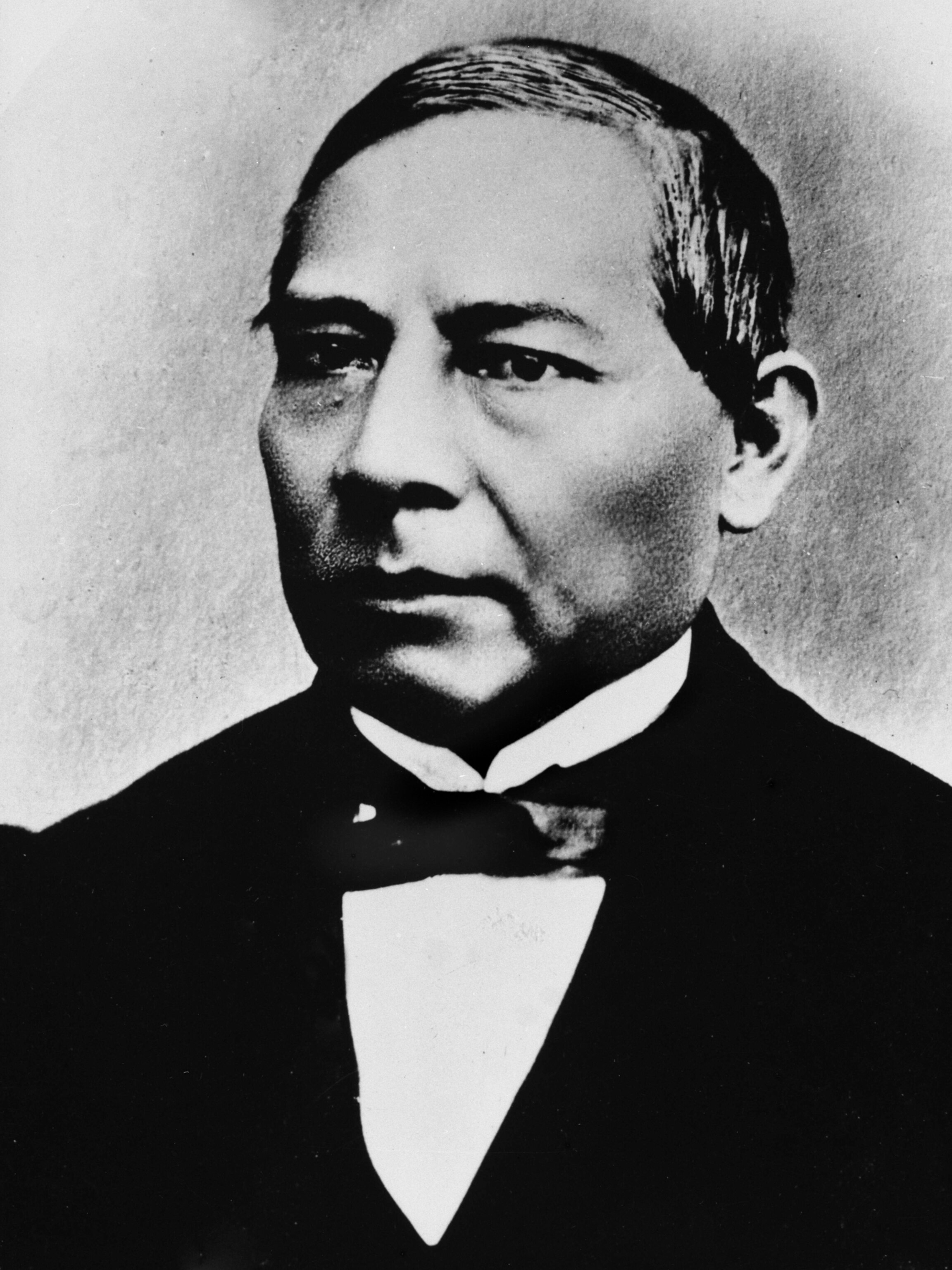Cinco de Mayo: How a Mexican holiday became a party in the USA
The May 5 holiday honors Mexico’s victory in an 1862 battle—so how did it come to rival St. Patrick’s Day as a day of revelry in the United States?

Every year on May 5, fiesta lovers across the United States gather to celebrate the Mexican holiday Cinco de Mayo—literally "May 5" in Spanish. And some U.S. partygoers may be surprised to learn that Cinco de Mayo history is short on beer, long on bloodshed.
Cinco de Mayo is often mistaken for Mexican Independence Day, which is actually September 16. On that date in 1810, Mexico declared its independence from Spanish rule.
Cinco de Mayo actually commemorates another Mexican army victory. Here’s what to know about the holiday—and how it became more widely celebrated in the U.S. than it is in Mexico.
The origins of Cinco de Mayo: The Battle of Puebla
Cinco de Mayo traces its origins to the Mexican army’s unlikely defeat of far better equipped French forces at the Battle of Puebla on May 5, 1862.
Emperor Napoleon III had sent French troops to Mexico to secure dominance over the former Spanish colony and install one of his relatives, Archduke Maximilian of Austria, as its ruler. Led by General Ignacio Zaragoza, a Mexican militia raced to fortify the city of Puebla against the advancing French troops.
(Here’s how the Battle of Puebla unfolded.)
Zaragoza won the battle, but the Mexicans ultimately lost the war. Maximilian became Mexico's emperor for three years before the country reclaimed its independence.


How Cinco de Mayo became a U.S. holiday
Cinco de Mayo is celebrated only sporadically in Mexico, mainly in the southern town of Puebla and a few larger cities.
However, Cinco de Mayo rapidly gained popularity in the U.S., where changing demographics have helped to turn the holiday into a cultural event. Latinos are the largest minority in the U.S. today with 62.1 million people, representing 18.9 percent of the population, according to 2020 Census data.
(Hispanic? Latino? Here's where the terms come from.)
Cinco de Mayo gained its first popularity in the U.S. in the 1950s and 1960s, partly because of an outpouring of brotherly love, José Alamillo, who was then a professor of ethnic studies at Washington State University, told National Geographic in 2006.
"The reason it became more popular was in part because of the Good Neighbor policy," he said, referring to a U.S. government effort at the time to reach out to neighboring countries.
"Cinco de Mayo's purpose was to function as a bridge between these two cultures," Alamillo said.


The holiday's popularity really grew in the 1960s, when Mexican-American, or Chicano, activists embraced the holiday as a way to build pride among Mexican Americans, Alamillo says.
The 1862 Cinco de Mayo victory carries a strong anti-imperialist message that resonates with many Mexican Americans, experts say.
"As a community, we are tough and committed, and we believe that we can prevail," said Robert Con Davis-Undiano, a professor of Chicano studies at the University of Oklahoma in Norman. "That was the attitude of the ragtag Mexican troops who faced and defeated the French in Puebla.”
(How Latinos are shaping America's future.)
At the same time, Cinco de Mayo was transformed from a strictly nationalist celebration to a bicultural event that expressed Mexican Americans identity, Alamillo said.
"It allowed for Anglo-Americans to partake in and learn about Mexican culture through Cinco de Mayo," Alamillo said. "Mexican Americans by this point were interested in building this relationship, because they were asking for certain political demands and for more resources for the community.
"It became a really interesting negotiation festival in a lot of ways."

How Cinco de Mayo is celebrated today
Then came the 1980s, and the commercialization of Cinco de Mayo.
This, Alamillo said, is when the meaning of Cinco de Mayo changed from community self-determination to a drinking holiday for many people.
He says U.S. corporations, particularly those selling alcohol, were eager to tap into the expanding Hispanic population in the U.S.
"It's not just the large number of the Hispanics but also that it's a very young population that is particularly receptive to advertisers," Alamillo said. “Cinco de Mayo became a vehicle to tap into that market.”
Today, most Americans celebrate Cinco de Mayo by indulging in a glut of tacos, tequila, and beer. In fact, in recent years Cinco de Mayo beer sales have outpaced both St. Patrick’s Day and the Super Bowl.
But many communities still do honor the holiday with festivals, parades, and other events honoring the richness of Mexican-American culture and heritage.
Related Topics
You May Also Like
Go Further
Animals
- Are 'giant, flying' joro spiders really taking over the U.S.?Are 'giant, flying' joro spiders really taking over the U.S.?
- This invisible killer takes out 3.5 billion U.S. birds a yearThis invisible killer takes out 3.5 billion U.S. birds a year
- Charlotte, the 'virgin birth' stingray, has a diseaseCharlotte, the 'virgin birth' stingray, has a disease
- See how billions of cicadas are taking over the U.S. this summerSee how billions of cicadas are taking over the U.S. this summer
- Why are orcas ramming boats? They might just be bored teenagersWhy are orcas ramming boats? They might just be bored teenagers
Environment
- Extreme heat is ahead—and you’ll feel every degree of itExtreme heat is ahead—and you’ll feel every degree of it
- Ready to give up fast fashion? Give 'slow fashion' a try.Ready to give up fast fashion? Give 'slow fashion' a try.
- Exploring south-central Colorado’s backcountry
- Paid Content
Exploring south-central Colorado’s backcountry - 2024 hurricane season forecasted to be record-breaking year2024 hurricane season forecasted to be record-breaking year
- Connecting a new generation with South Africa’s iconic species
- Paid Content
Connecting a new generation with South Africa’s iconic species - These images will help you see coral reefs in a whole new wayThese images will help you see coral reefs in a whole new way
History & Culture
- How the rainbow flag became a symbol of the LGBTQIA+ communityHow the rainbow flag became a symbol of the LGBTQIA+ community
- No women allowed: These 5 destinations are men-onlyNo women allowed: These 5 destinations are men-only
- The harrowing true story of the photo that defined D-DayThe harrowing true story of the photo that defined D-Day
- The forgotten history of New York’s first electric taxi fleet—in the 1800sThe forgotten history of New York’s first electric taxi fleet—in the 1800s
- Your khaki pants have a history that may surprise youYour khaki pants have a history that may surprise you
Science
- Why health advocates are concerned about a chemical in your decafWhy health advocates are concerned about a chemical in your decaf
- Is decaf healthier than regular coffee? Here’s how they compare.Is decaf healthier than regular coffee? Here’s how they compare.
- Why doctors can't agree that more breast screenings save livesWhy doctors can't agree that more breast screenings save lives
- This is the biggest health threat to women in their 60sThis is the biggest health threat to women in their 60s
Travel
- 5 unique ways to discover Jersey’s coastline
- Paid Content
5 unique ways to discover Jersey’s coastline - 9 of the world's most beautiful lakes—and what to do there9 of the world's most beautiful lakes—and what to do there
- 5 of the best places to eat in Trastevere, Rome
- Paid Content
5 of the best places to eat in Trastevere, Rome - Student gap year travel is changing. Here's why it mattersStudent gap year travel is changing. Here's why it matters
- Inside the rise of river surfing, the Midwest’s next big thingInside the rise of river surfing, the Midwest’s next big thing




